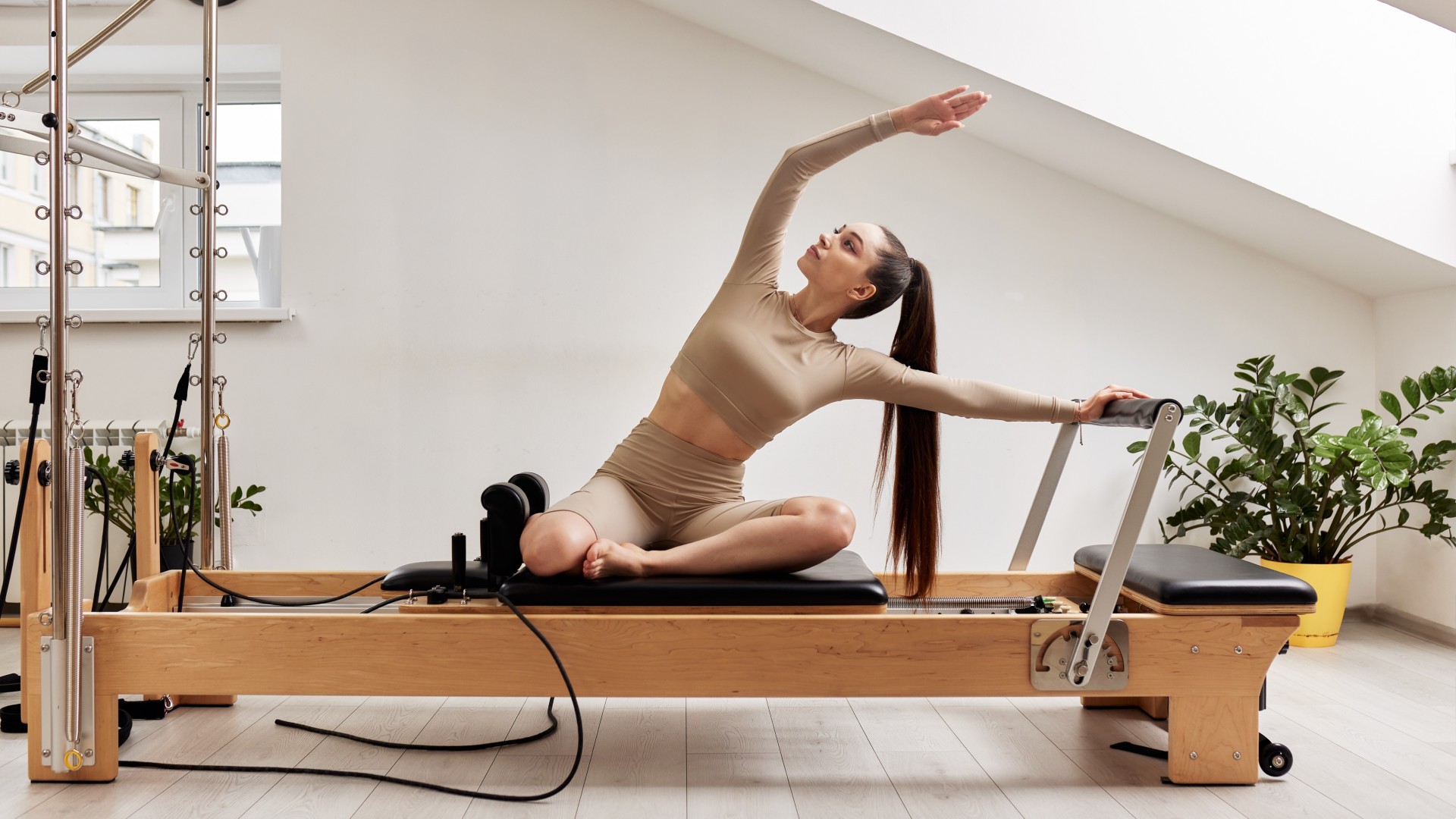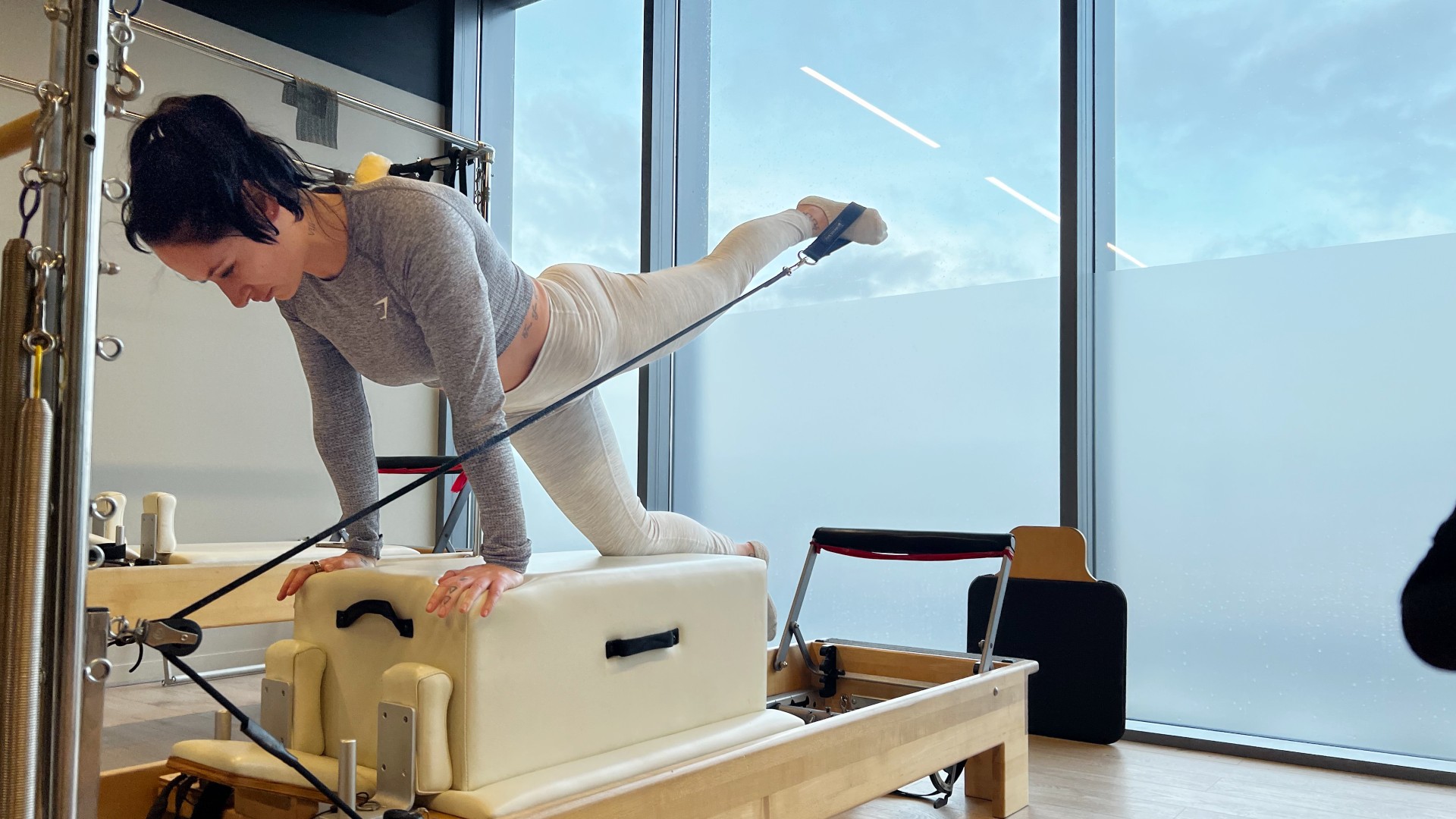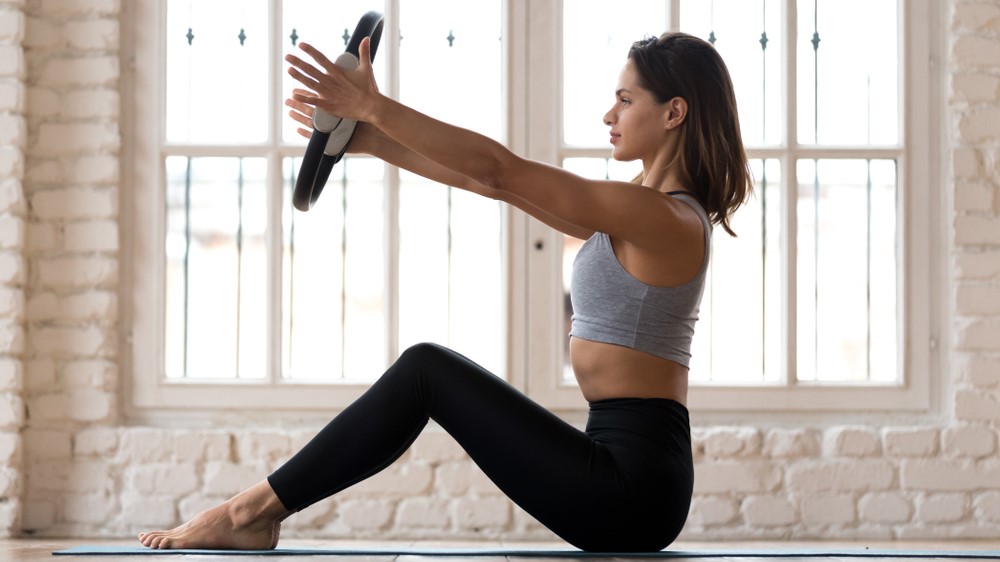
If you’re a Pilates beginner looking ahead to your first class, whether at home or in your local studio, here are three lessons I’ve learned from practicing and ways to prepare for your first session.
Reformer Pilates and mat Pilates are having a moment, and it seems the exercise trend is only getting bigger and better this year. But if you haven’t done a class before, a few tips and tricks can help you reap the benefits of Pilates and avoid some of the common pitfalls we see.
Here are just some of the reasons to adopt a Pilates practice and how to maximize your time spent in class.
Pilates benefits
There are many things an hour of Pilates can do for your body, but the low-impact workout style won’t necessarily leave you dripping with sweat or out of breath, which is why it can be quite a shock to the system if you enjoy throwing yourself into high-intensity training like CrossFit or running.
Pilates, like yoga, has a strong mind, body and breath focus. It’s brilliant for strengthening your body using high repetitions and small and controlled movements, building core strength and stability and improving posture. The practice complements other exercise forms by helping you build a robust and injury-proof foundation.
The research is limited if you’re looking at Pilates for weight loss, as many factors affect losing weight. Some promising studies like this one posted in the Journal of Sports Medicine and Physical Fitness found that eight weeks of Pilates positively improved body composition in sedentary and overweight women. However, diet plays a role more than exercise as a standalone factor.
The focus on alignment and a strong core is particularly helpful for runners, sportspeople and weightlifters considering Pilates. Here’s what happened when our writer did Pilates every day for a month and the benefits.
3 things I wish I had known as a Pilates beginner
1. Find which class suits you best
Pilates has garnered a huge following, from regular gym-goers to athletes and celebrities. There are two main types: reformer Pilates and mat. I’ve practiced several styles in an attempt to “find my class,” and I’m still in the process of discovering what works for me — I tried reformer Pilates for the first time a while back, and the two styles have a completely different feel, so try both and see which one works for you (maybe it’s both).
In my experience, different instructors and styles bring a whole unique take to the class, and within mat or reformer, you’ll have different class levels depending on ability. Most Pilates beginners start with mat Pilates, but if you have a lot of exercise experience, nothing stops you from jumping into a beginner reformer class. Always speak to your local studio first and read the class descriptions.


Reformer Pilates vs mat Pilates
If you’re quietly asking — what is reformer Pilates? Reformer uses a large frame-like bed with a carriage that you can stand, kneel, or lay on. The carriage has coiled springs, which you can hook on or off to increase resistance, and are usually color-coded. There are various pulleys, handles, Pilates rings, or light weights you can add during class, and it’s particularly helpful for honing in on specific muscle groups and injury rehabilitation.
Mat Pilates is done (no surprises here) on an exercise mat and is more affordable and accessible. You’ll find Pilates rings, ankle weights, resistance bands and light weights used during class, but you won’t use the reformer bed. If you’re curious about what a mat Pilates class might look like, wall Pilates is the new workout everyone is talking about, and we love this 30-minute Pilates workout with over 4 million views.
2. Know what to expect from the workout intensity
As mentioned, you won’t necessarily leave Pilates drenched in sweat as you would with HIIT or hot yoga, so manage your expectations of the workout itself.
The whole idea of Pilates is to strengthen and build. In essence, you’re developing a mobile, flexible and stronger body by controlling the speed and quality of your movements through constant resistance. It’s low impact and relies on endurance, high reps, core work and stretching while targeting the entire body.
You’ll work your joints and muscles through a range of motion while they’re held under tension (a technique called time under tension) to improve stability, balance, power and posture. If you look at a class in action, it might not look too hard, but the classes are surprisingly challenging, and it’s the workout I’ve found most effective at targeting 360-degree core activation.
You won’t need heavy weights to kick up a burn, either — the high reps and repetition will do that for you. Don’t be tempted to go heavy off the bat, and be patient.
3. Learn how to breathe
The six Pilates principles include breath, concentration, control, precision, center and flow. Movements are precise, slow and controlled and center around your breath. Breathing properly will help you achieve proper alignment during exercises, send oxygen to the muscles and improve posture, ensuring you move with control rather than holding your breath when the muscles are under tension.
Your Pilates instructor will cue the breathing, but rather than ‘belly breathing,’ try to expand your torso during the inhale, directing your breath to your sides and back as if pulling your ribcage apart. On the exhale, allow your ribs to pull together again. The “powerhouse muscles” originate between the pelvis and ribcage — your core, including the diaphragm.
The video above should help you engage ‘the powerhouse’ so that you know how to breathe while you move your limbs, which should help you stabilize your trunk and protect the lower back.
Bottom line
I like to think of Pilates as providing the building blocks for your body to experience other, more high-intensity exercises or sports. The practice can strengthen, lengthen, stabilize and balance, helping the whole body to move better and improve overall physical function and performance.
The whole idea of Pilates is to strengthen and build. In essence, you’re developing a mobile, flexible and stronger body. It's a touch of TLC.
That said, while Pilates is for every body, it doesn’t always suit everyone’s personality or exercise style. If, like me, you’re used to firing on all cylinders during workouts, it can come as a shock stepping into a Pilates studio, and you’ll either enjoy slowing the tempo or it may just not click. But (again, like me) it actually might be just what you need.
You may feel a little sore after your first class, but it’s through regular practice that you’ll notice results for your body — better flexibility, strength and tone. Remember to ease yourself in, explore what you enjoy and take your time to find a sustainable practice you can maintain.







